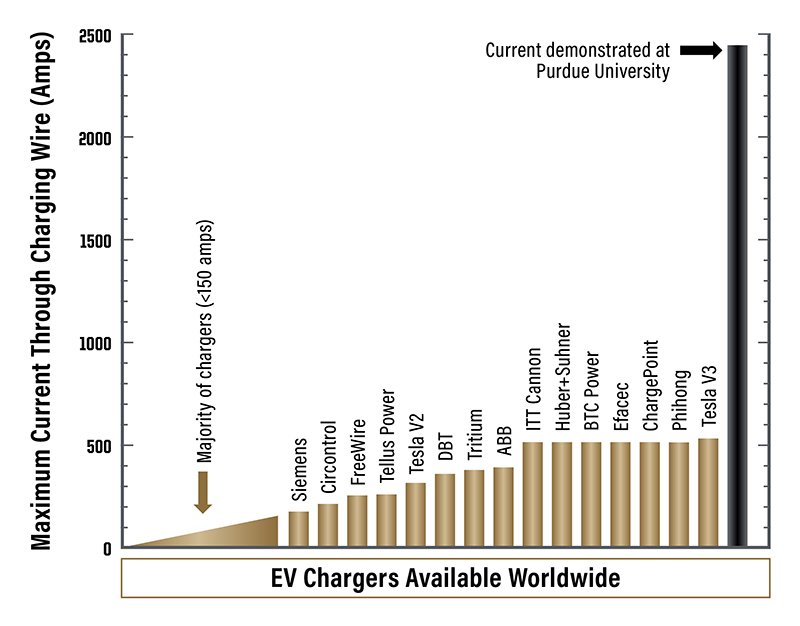Charging electric vehicles is a tedious and unpleasant procedure even the finest vehicles under perfect circumstances need to be plugged in for roughly 30 minutes to suck up enough juice to take them from a low battery to almost full. With a slower charger, it might take hours or days.
Understandably, this is too much to handle for some folks used to speedy fill-ups in their gas-powered automobiles.

Ford together with Purdue University is attempting to solve this issue by developing on a new wire that they believe might let electric vehicles charge up in around the length of time it takes to fill up a petrol tank.
They’ve done this by solving one of the primary difficulties inhibiting charging speed: overheating. The quicker current runs through a charging system, the hotter everything becomes, from the battery to the charging cable.

Cooling things down may allow for bigger currents and quicker charging — and that’s precisely what Purdue has done.
Researchers devised a cable that employs liquid-and-vapor cooling to support a current of over 2,400 amps, roughly five times that of today’s most modern electric vehicle chargers. Tesla Superchargers, Purdue claims, provide up to 520 amps. Only 1,400 amps are required to reduce charging duration for big EVs down to five minutes, the researchers claimed.

The technique is still patent-pending and the prototype cable hasn’t been tested with an electric car yet. But Purdue’s discovery is a promising step toward making clean, battery-powered automobiles as handy as ones that operate on dirty fossil fuels.
Reference- Ford Media-room, Purdue University PR, Business Insider, Science Alert






